If you have a pregnant cat (queen), and it looks like she is ready to birth her kittens (queening), chances are that you will not need to do anything to help her give birth except encourage her. You may even wake one morning to discover that your cat has given birth during the night and is comfortably nursing her kittens.
Although nature has a way of taking care of itself, you should know how to spot potential problems while your cat is in labor and what you might need to do to help.
Signs Your Cat is About to Give Birth
The duration of a cat pregnancy is roughly 65 days, give or take five days. If you are not so sure how far along your cat is, review the telltale signs that birth is imminent.
Nesting
A day or two before labor, your cat will seek out a quiet and safe place to have her kittens. She may choose a spot you make for her or look to hide out in the back of a closet or under a bed.
Behavioral Changes
You may notice your cat will begin restless pacing, panting, excessive grooming (especially in the area of her genitals), and excessive vocalization. She will also stop eating.
Physical Changes
Your cat's rectal body temperature may drop below 99 degrees Fahrenheit and she may vomit. You might see the abdomen "drop" a few days before labor, and the cat's nipples might get larger, darker, or pinker.
Active Labor Signs
Contractions—the uterine movements that move the kitten down the birth canal—may make your cat yowl through the pain. You may also see a discharge of blood or other fluids.
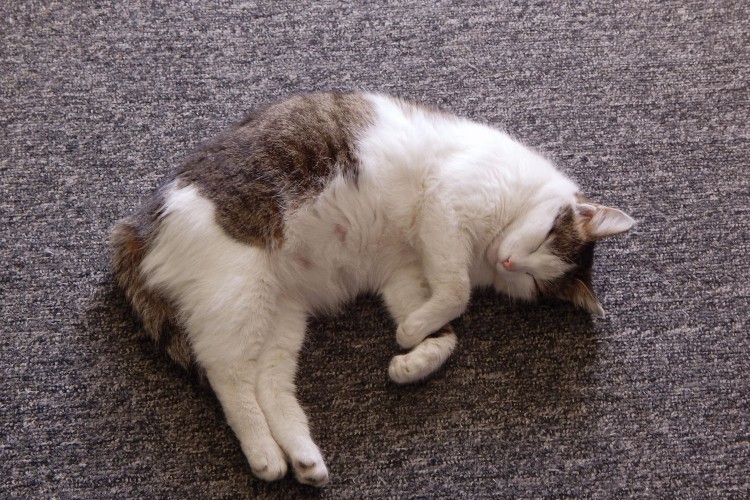
Supplies for the Birthing
Your cat might want to hide to give birth. However, you can prepare a birthing area, such as a cardboard box or laundry basket lined with towels or blankets. If the cat uses this spot, it will be easier for you to observe and attend to the birth.
- Absorbent pads: Get absorbent pads to line the delivery area.
- Towels: You will need clean towels or paper towels to clean the area and stimulate the kittens, if necessary.
- Nesting box: If you have brought your pregnant cat to the vet, and you know how many kittens to expect, get a nesting box large enough for the brood. Although a cat can have from one to 12 kittens, an average litter is about four kittens. A standard, 8-pound cat should be fine with a box that is 16 inches by 24 inches. The larger the cat, the bigger the box it will need.
- Heating pad: Put a heating pad in the bottom of the box with a blanket or several towels over it to prevent the kittens from getting chilled. Never place the kittens directly on a heating pad; it can burn them. If the box does not have a lid, then drape a clean towel over the top to hold the heat in and keep out drafts.
- Trash Can: You will have a bunch of soiled towels after the birth, so have a laundry basket, plastic bag, or extra garbage bin ready for discarding them.
- Dental floss and clean scissors: If the mother cat does not break away the umbilical cord, you will need to tie it off with dental floss and cut the cord.
The Kitten Birthing Process
The trigger for the birth process is unknown, but factors include the size and weight of the uterus, size and weight of the fetuses, and the hormonal balances of the fetuses and the queen.
During the birth process, rhythmical uterine contractions gradually increase to push the fetus out of the uterus and into the birth canal.
The birth of one kitten can take anywhere from 5 to 30 minutes. The kittens are born within their amniotic sacs, which the mother cat will remove. She will stimulate the kittens to breathe by washing them with her rough tongue. She will also sever the umbilical cord by chewing on it approximately one inch from the kitten's body. She may also eat the placenta. The kittens will immediately gravitate toward a nipple, latch on, and nurse.
If the mother cat ignores the kitten and it is still in its sac, you will need to carefully cut or tear the membrane pouch and stimulate the kitten's breathing by rubbing its nose and mouth gently with a rough, dry towel. If the mother cat has difficulty biting off the umbilical cord, tightly knot dental floss around the umbilical cord 1 inch from the kitten's body and cut the umbilical cord on the mother's side of the tie.
If a placenta does not come out with each of the kittens, make sure it expels within 24 hours after birth. Each kitten should have one placenta. It is a good idea to count the placentas. If the placenta remains in the cat, you will need to see a veterinarian.
About 30 to 60 minutes may pass between births, but more prolonged periods are not uncommon. If there is a delay of over 4-6 hours and you are sure there are remaining kittens, the mother cat needs examination by a veterinarian. Whether the birth went smoothly or not, the mother cat and kittens should be examined by your veterinarian within 24 hours of birthing.
Length of Time for the Total Birth Process
It takes, on average, half a day for a mother cat to give birth to all her kittens. The first kitten should arrive within an hour of the start of active labor.
In between kittens, the mother cat will rest and should be allowed to nurse and clean the kittens that were born. If you have been keeping the kittens in another box, move them back with the mother cat and help them find a nipple. A break in birthing is a good time for you to offer her food, kitten milk replacement, or plain, unflavored yogurt.
Problems During Labor
Fortunately, most queens can deliver their kittens without human intervention. However, some complications may occur.
- Extended contractions without birth: If your cat is having more than 60 minutes of strong contractions without any progress, take it and any kittens to your vet.
- Retained placenta: If your cat does not pass each of the placentas, it can lead to a uterine infection. Count each of the placentas, even if the queen eats it. The number of placentas should equal the number of kittens.
- Kitten lodged in the birth canal: Most kittens are born head-first. Breech (tail-first) births occur about 40 percent of the time and are considered normal. A kitten lodged in the birth canal for more than 15 minutes is likely in distress. Call your vet if a kitten is lodged in the birth canal for more than 10 minutes or if you see green discharge without a kitten following within 15 minutes. Your vet will give you the next steps to follow.
- Stillborn kittens: It is not uncommon for one to two kittens to be born stillborn. Remove the dead kitten from the area so the mother can continue uninterrupted with birthing the other kittens.
- Postpartum hemorrhaging: Although some bleeding after giving birth is normal, excessive bleeding or hemorrhaging is an emergency and requires immediate veterinarian attention. If ignored, the mother cat can die. If the regular bleeding continues for more than a week after birth or if the bleeding stops for a day and then starts again, seek veterinary assistance.
Once all the kittens are born, your queen should be caring for and feeding them. During nursing, your cat's caloric needs will increase greatly. Make sure she has ample kitten formula food. A high-quality kitten formula will meet your cat's high-energy nutritional needs.
If your cat is not nursing or eating, seems to be in pain or is lethargic, something is not right. Also, a foul odor along with frequent bleeding indicates an infection or retained kitten. If this is happening to your cat, seek immediate veterinary care.
- How long does it take for a cat to take birth?
Feline labor takes from two to six hours.
How soon can a cat get spayed after giving birth?The mama cat can get spayed once her kittens have weaned themselves, when they are five to six weeks old.
How do you prepare a cat to give birth?Give your cat a safe and warm place to give birth. Create a nest in a box full of warm blankets and towels that are washable. Place her food, water, and litter nearby.
If you suspect your pet is sick, call your vet immediately. For health-related questions, always consult your veterinarian, as they have examined your pet, know the pet's health history, and can make the best recommendations for your pet.Related Article
 cat-nutrition-and-food
cat-nutrition-and-foodWhy Are Cats Scared of Cucumbers?
You may have seen videos online of people scaring their cats by quietly placing a cucumber behind t
 cat-reproductive-health
cat-reproductive-healthHow to Care for a Pregnant Cat
Is your cat pregnant? In a perfect world, your cat would have been spayed before this could happen.
 cat-diseases-and-disorders
cat-diseases-and-disordersRapid Breathing in Cats
Rapid breathing (tachypnea) is not a disease in itself, but it can be a symptom of a potentially s
 cat-diseases-and-disorders
cat-diseases-and-disordersDry Skin in Cats
Dry skin in cats can lead to flakiness, dandruff, itchiness, and general discomfort. It can also ma
 hairless-cat-breeds
hairless-cat-breedsHow to Care for a Hairless Cat
Hairless cats have been popular for decades. This in part to their friendly, sociable, almost dog-l
 long-haired-cat-breeds
long-haired-cat-breeds14 Asian Cat Breeds And Their Rich Hiss-tories
Asian cat breeds are some of the most well-known around the world. This area has produced some incr
 short-haired-cat-breeds
short-haired-cat-breedsKorat: Cat Breed Profile, Characteristics & Care
The Korat, also known as the Si-Sawat, is a stunning cat breed that originated in Thailand over 900
 short-haired-cat-breeds
short-haired-cat-breedsScottish Fold: Breed Profile, Characteristics & Care
The Scottish fold cat is a sweet-tempered, short-haired breed with an adorably round face and folde
About FleaFree Feline
We are a premier digital platform committed to delivering high-quality content to our readers. Our mission is to provide accurate, reliable, and engaging information that adds value to our audience's daily lives.
Our team consists of experienced content creators and subject matter experts who uphold the highest standards of professionalism. In an era of information overload, we curate content with care, ensuring our users receive only the most relevant and trustworthy information.
Beyond just reporting facts, we focus on depth and context. Through expert analysis, comprehensive research, and clear presentation, we help our audience gain meaningful insights and make informed decisions.
We take pride in being a trusted information source for our growing community of readers. Our user-first approach means we continuously adapt to provide content that meets our audience's evolving needs and interests.
Innovation and excellence drive everything we do. We're committed to improving our platform and services to deliver the best possible experience for our users.

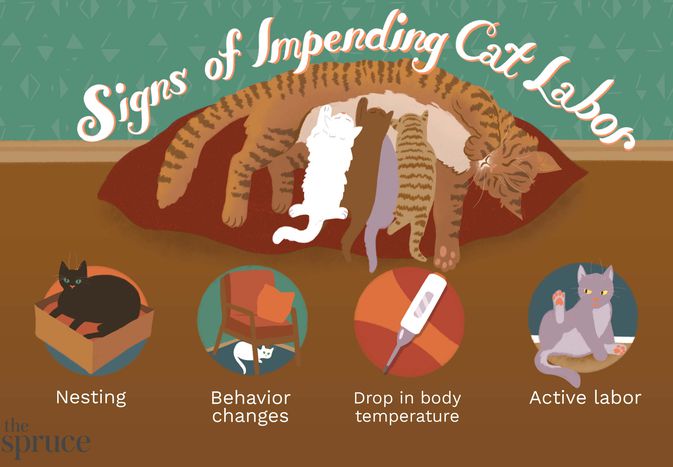

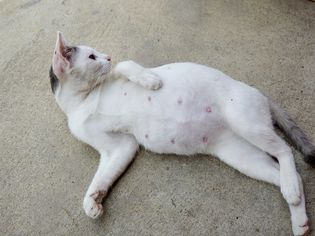
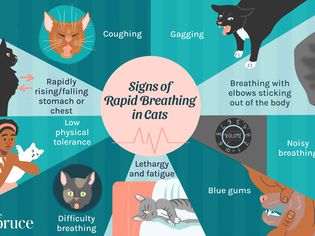

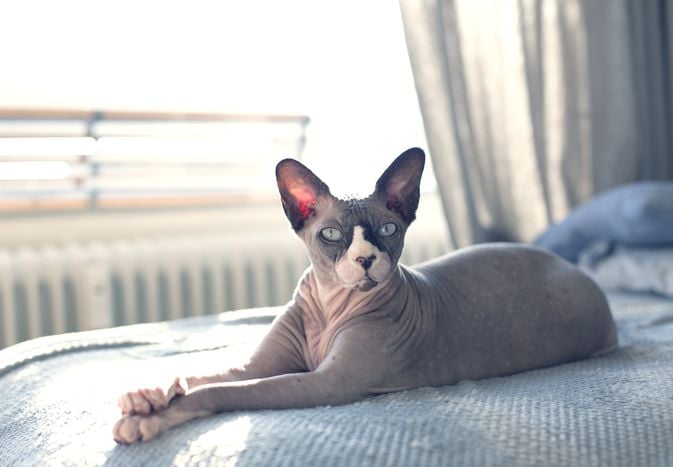



Comments on " How to Help a Pregnant Cat Give Birth" :